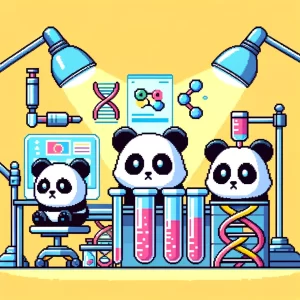
The Rise of De-extinction: Could Resurrecting Ancient Species Save Our Future?
The quest to bring back extinct species has evolved from science fiction to scientific possibility, thanks to groundbreaking advancements in genetic engineering. With projects aiming to revive creatures like woolly mammoths, the concept of de-extinction fascinates both scientists and the general public. This blog post delves into the recent developments and implications of de-extinction technologies.
The Science Behind De-extinction
De-extinction involves using advanced genetic techniques to resurrect extinct species by retrieving and analyzing ancient DNA. One popular method includes back-breeding, where scientists breed existing species that share traits with the extinct species, and another method is cloning using DNA samples from preserved remains.
In recent research, ambitious projects are working towards bringing back famous prehistoric creatures like the dire wolf and woolly mammoth. Through these efforts, scientists hope to restore lost biodiversity and strengthen ecosystems.
Potential Environmental Impact
The return of these majestic creatures could help support ecosystems that have evolved in their absence. Proponents of de-extinction argue it could reverse some human-induced environmental damage. For example, reintroducing woolly mammoths to the tundra could impede the melting of permafrost by trampling snow and encouraging the growth of grasslands, thus reducing carbon emissions.
However, there are valid concerns about the ecological impact of such reintroductions. Critics warn of unforeseen consequences, as the environmental niches these species once occupied may have changed significantly.
Ethical Concerns
Beyond ecological effects, ethical considerations are at the forefront of the de-extinction debate. Questions abound regarding the welfare of the animals created through these methods—how will they fare in our modern environment? Additionally, should we invest in saving endangered species instead of reviving those that have already been lost?
The idea of using advanced biotechnology to recreate life raises further moral questions about human intervention in nature. As thrilling as the prospect of seeing a living woolly mammoth is, it presents ethical dilemmas that must be addressed carefully.
Current Developments and Future Prospects
The latest progress in de-extinction projects has undeniably captured the world’s attention. With private biotech companies and academic collaborations stepping into the fray, we are potentially on the cusp of a new era in biodiversity restoration.
The potential to enhance public interest and resources for conservation and awareness is an additional benefit. However, there is an urgent need to consider scientific hopes alongside their broader biological and societal implications.
Concluding Thoughts
De-extinction is not just about reviving the past. It’s a forward-looking venture into our relationship with nature and how we can responsibly harness technology to address ecological crises. As with any pioneering scientific endeavor, a balanced approach involving interdisciplinary dialogue and rigorous ethical standards will be crucial to its success.
Whether de-extinction fulfills its promise or poses great risks, the journey itself offers invaluable insights into genetics, conservation, and the blending of old and new worlds.



